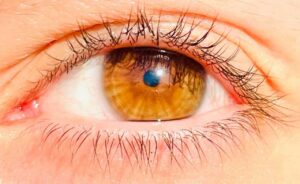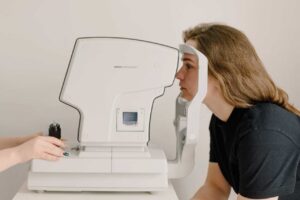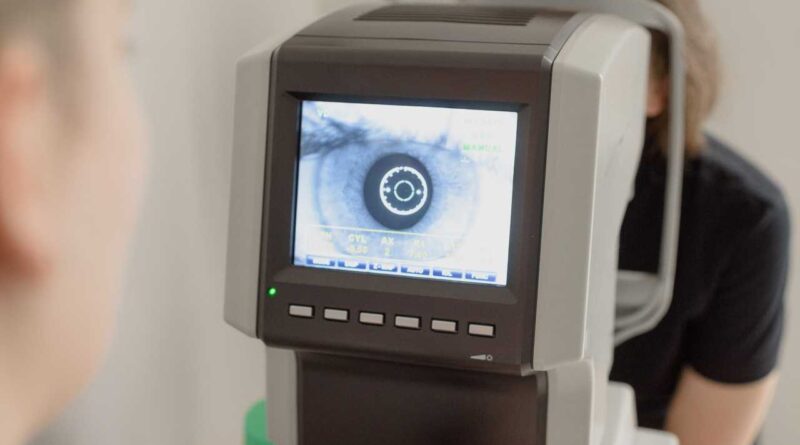Visualizing a Healthier Future
HEALTH
by Irianna Torres
Every day we take for granted one of the most important senses we have: the ability to see. Our vision allows us to see the world as it is and in new ways. It is also important for keeping us safe and allowing us to learn new things that keep the mind sharp. So how do we make sure the health of our eyes is maintained?
ways. It is also important for keeping us safe and allowing us to learn new things that keep the mind sharp. So how do we make sure the health of our eyes is maintained?
An excellent opportunity is through a comprehensive eye exam, which checks not only how well you can see, but also the overall health of all the parts of your eyes. This eye exam can be completed by an eye doctor. For adults aged 18-64, it is recommended to have an eye exam at least every two years unless they have risk factors (such as prior eye surgery, eye trauma, or poor vision) then an annual exam is recommended. Adults older than 65 should have an eye exam annually.
Early detection of eye diseases is essential for preventing significant damage to vision. Unfortunately, many eye diseases are not caught until a lot of damage has already occurred and much of the vision is permanently lost. Thus, we must make it a priority to have preventive screening through routine eye exams.
 What are some important parts of the eye exam? First, the doctor will ask about your medical history, any prior eye surgeries, eye traumas, and about any medications you take that could affect your eyes. Next, your vision will be checked to see how far of a distance you can see. Near-sighted people have problems seeing things far away, whereas far-sighted people have problems seeing things that are close, but both require corrective glasses or lenses to have good vision. Then, your eye muscles are checked to make sure your eyes move in every direction possible so you can see all around you. Then your ability to see peripherally, for example when you catch something out of the corner of your eye, is examined. Finally, the inner parts of your eyes are checked: from your eyelashes all the way to the innermost part of your eye that connects to your brain, which allows you to understand what you see.
What are some important parts of the eye exam? First, the doctor will ask about your medical history, any prior eye surgeries, eye traumas, and about any medications you take that could affect your eyes. Next, your vision will be checked to see how far of a distance you can see. Near-sighted people have problems seeing things far away, whereas far-sighted people have problems seeing things that are close, but both require corrective glasses or lenses to have good vision. Then, your eye muscles are checked to make sure your eyes move in every direction possible so you can see all around you. Then your ability to see peripherally, for example when you catch something out of the corner of your eye, is examined. Finally, the inner parts of your eyes are checked: from your eyelashes all the way to the innermost part of your eye that connects to your brain, which allows you to understand what you see.
In adults, some of the most common diseases the doctor looks for are cataracts (the condition where the clouding of the natural lens inside the eye impairs the vision, diabetic retinopathy (a complication of diabetes that can lead to blindness), and glaucoma (a condition where fluid becomes trapped inside the eye and can lead to blindness because the extra fluid presses against the innermost part of your eye that connects to your brain). These conditions are treatable, but require detection through an eye exam.
As you enjoy the dazzling decorations all around you and marvel at the beautiful firework displays this holiday season, remember to take care of the organs that help you appreciate these wonderful visuals: your eyes.
References
https://www.ncbi.nlm.nih.gov/pmc/articles/PMC7041818/
https://www.canopyhealth.com/en/members/articles/the-importance-of-routine-eye-exams.html
Irianna Torres was born to Puerto Rican parents and raised on the West Side (a predominantly Hispanic inner-city neighborhood) in Buffalo, New York. In 2015, she graduated from SUNY University at Buffalo. For three years, she conducted breast cancer research at the National Cancer Institute in Bethesda, Maryland. In 2018, she returned to New York to begin medical school at the University of Rochester School of Medicine & Dentistry. She is a part of the Latino Health Pathway, in which medical students learn medical Spanish and learn how to better communicate with the Hispanic community to better serve their health. She is passionate about equity in healthcare for minorities, refugees, and impoverished communities.
York. In 2015, she graduated from SUNY University at Buffalo. For three years, she conducted breast cancer research at the National Cancer Institute in Bethesda, Maryland. In 2018, she returned to New York to begin medical school at the University of Rochester School of Medicine & Dentistry. She is a part of the Latino Health Pathway, in which medical students learn medical Spanish and learn how to better communicate with the Hispanic community to better serve their health. She is passionate about equity in healthcare for minorities, refugees, and impoverished communities.
Photo of an eye was provided by Irianna.
Eye exam machine and Vision Screener photos by Ksenia Chernaya from Pexels


